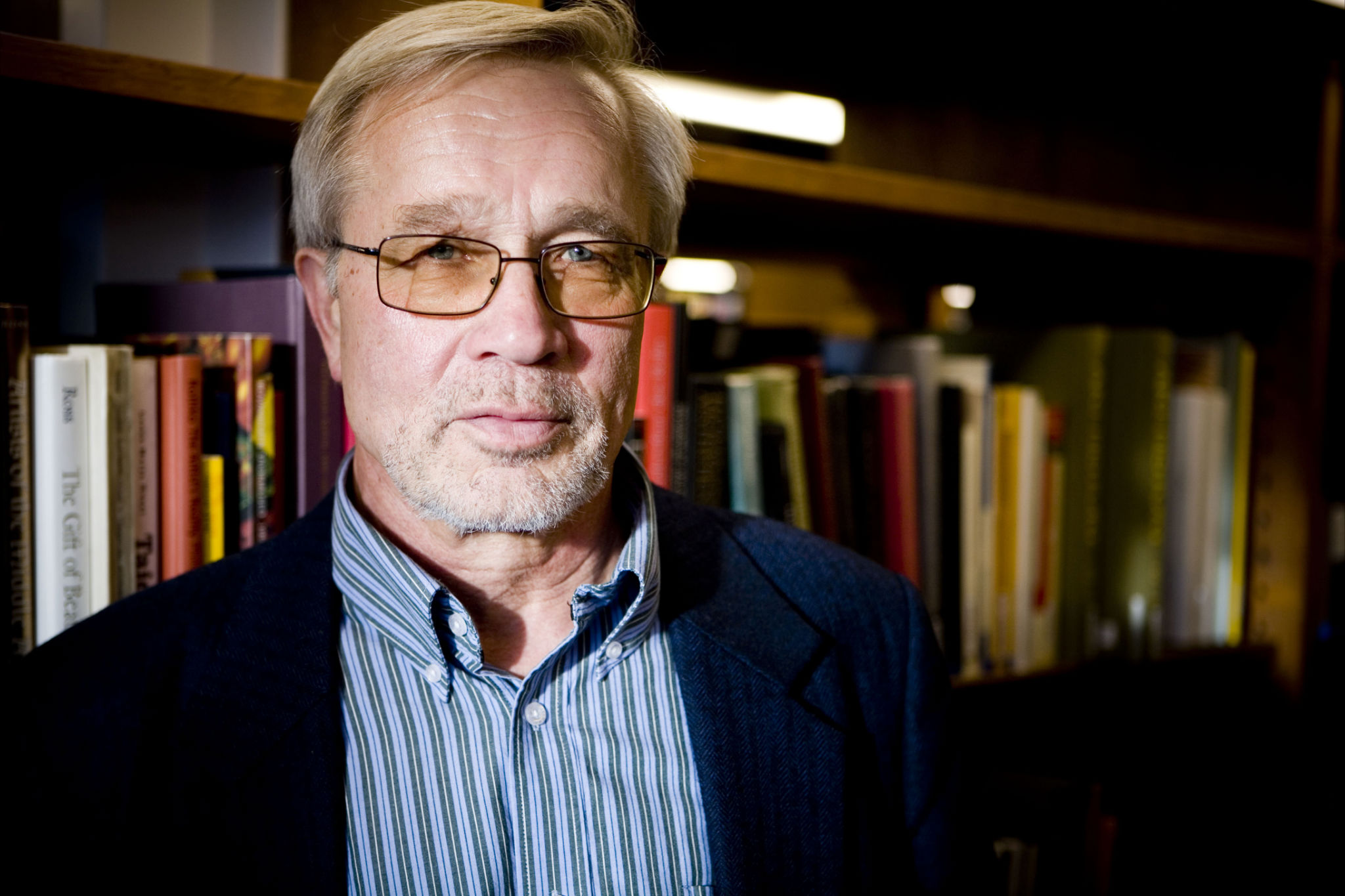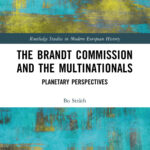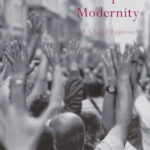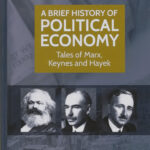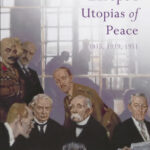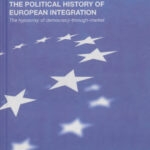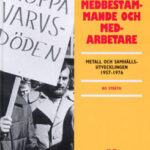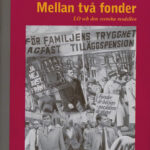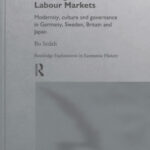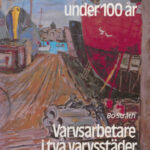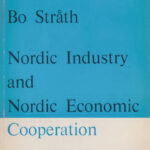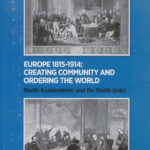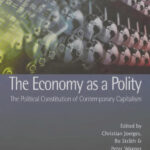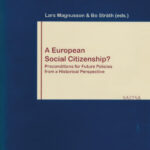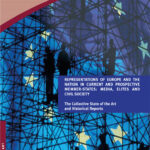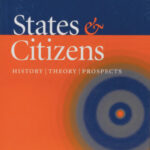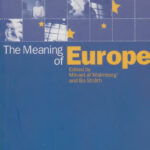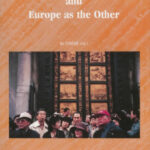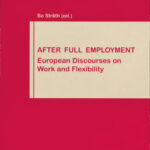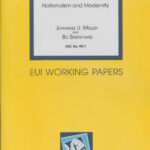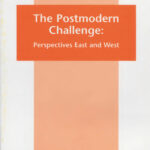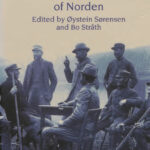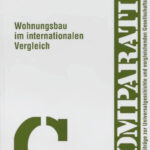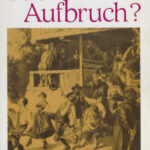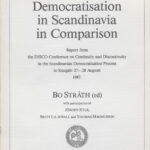The future as progress
The belief that the future is progress broke through with the French revolution and the enlightenment philosophy that paved its way. Before that, a cyclical time perspective had prevailed since antiquity. Cyclical time had a political dimension. Aristotle described it as a movement between monarchy, aristocracy and democracy in a virtuous circle and between tyranny, oligarchy and anarchy in a vicious circle. Mutations could occur between the circles. The French revolution seemed to confirm them. The revolution was the reaction to the monarchy that had become tyranny, and Napoleon was the answer to anarchy in which the revolution ended. The future was a given from the past.
The difference in 1789 was that the movements between regimes were much faster than one was used to. The very word revolution, revolvere, to roll back, confirmed the cyclical perspective. That is why there was talk of a revolution in France in 1789. Everything went round, not forwards. In pre-industrial agrarian societies, seasonal cycles reinforced the repetitive perspective. Only with the French revolution in the rear-view mirror did people begin to interpret time as a breakup towards something new. It was not reiterative. Events recurred but in a continuously new context. The concept of revolution was redefined as a spearhead towards a different future. The industrial revolution and Karl Marx’s interpretation of it contributed more than anything else to the breakthrough of the future idea of progress. The controversy around what progress meant was a key driver of democratisation in the emerging industrialised countries. Through the enlightenment philosophy, the belief spread that a different future could be a better future through human action. What ‘better’ meant was, of course, contested, but the idea of ‘better’ connected the future to progress.
The future as progress in nineteenth-century nation-building and the expansion of state power was linked to the idea that it could be planned and created through objectives that were not unambiguous but often competed with each other. The future became goal orientated. There was an ambivalence between the future as actively planned and created by individuals, groups, or classes and as embedded in History. Teleological thinking emerged.
The future as progress was inscribed in a larger narrative of enlightenment and modernisation. It was a narrative of how Europe/West ordered time and space with words like enlightenment, reason, rationality and modernisation. But the talk of progress that would encompass all the peoples of the world was translated into colonialism, imperialism, racism, exploitation of people and nature, unequal distribution of the earth’s resources, pogroms, genocide and world wars. A gap emerged between the assumptions and goals that built the vision of progress and the often-brutal practices that accompanied the vision. The narrative of progress claimed that it occurred in a continuous process towards a better world, whatever that meant. However, the argument of continuous progress needed to be continuously reformulated. The idea of progress had to be repeatedly recreated through new visionary projects to live up to the promises of progress that were repeatedly unfulfilled.
The belief in progress meant that the future would be different, i.e. better. But it was not better for everyone, and the meaning of better was, as mentioned, contested. Above all, progress also had losers. For them, it was hard to see any progress. But the power of the progress narrative and the great economic, technological, political and social factual advances made were for many real experiences. The voices of the losers were suppressed by those many who felt they were better off. This situation changed from the 1870s onwards when political protest and creative politics began to react to the fate of the losers and work to turn them into winners with a share in progress through, for example, the expansion of education and general welfare. The realisation grew that losers could become winners. The working classes emerged convinced of having the future on their side
Reinhart Koselleck developed a theory around this pattern of losers becoming winners. He described how people translated their experiences into galvanising and mobilising expectations and created political movements through social criticism. Often, the expectations turned into disappointment that they were not realised. From this disappointment, however, new expectations and a new movement emerged. Often, it was the losers of history who managed better than its winners to translate their experiences of defeat into new, exciting horizons of expectation to move towards. But, Koselleck warned, it could happen that one day the accumulation of disappointments would become so great that no one could develop new expectations. The narrative of the future as progress would then collapse. Although Koselleck tirelessly spoke of history in the plural as opposed to history in the singular, and that the future was thus in principle open, there was a pessimistic undertone to his theory, which he called the pathogenesis of civil society (bürgerliche Gesellschaft).
His approach was rooted in the existential threat of the Cold War, which he derived from enlightenment thinking. How was it that two great and mobilising Enlightenment ideologies of the future as progress, socialism and liberalism, brought the world to the edge of nuclear annihilation after the two world war disasters? That was the big question underpinning Koselleck’s search for the historical answers to the twentieth-century catastrophes.
Futurologists, futurists and the new world corporations
Based on the belief in enlightenment as progress, the future became science in the 1960s. Futurology was the name of the new discipline tasked with exploring what the future would or could look like. In her transnational history of the future, Jenny Andersson has mapped and examined the attempts in the 1960s and 1970s to come to terms with the future and to shape it by turning it into science. Broadly speaking, the exploration of the future followed two lines: one, futorology, was concerned with how to master the future in the existing Cold War world with its existential threats. The other, futurism, sought to imagine alternative worlds beyond the Cold War. With these approaches, the future became an intellectual instrument for dealing with the great problems of that time.
Futurology emerged in an academic-political field with the ambition to address the uncertainty and anxiety that followed in the wake of the Cold War. The task was to make the future more predictable. Futurology was driven by and developed interpretive frameworks with names like systems theory, game theory, rational choice theory, probability calculus and cybernetics. Many futurological think tanks and idea factories focused on controlling and managing the risks that came with the nuclear balance of terror. The future was analysed as a game of chess: how to respond to the opponent’s move, and what does the opponent do in response? The future was described as chains of action that sought to make the Cold War a matter of reason, predictability and security. But there was also planning for economic growth and public welfare, with the framework being the post-war welfare states, stabilised by trend-projecting objectives in rolling annual and five-year plans in what was believed to be economies of continuous growth. Rolling meant continuous feedback and revision like in Koselleck’s experiences-expectations dynamics
Johan Galtung and Robert Jungk were two protagonists in developing the futurists’ alternative approach to that of the futurologists. Futurism was originally an avant-garde art, design and politics movement in the early 20th century, originating and centred in Italy. A parallel movement emerged in the young Soviet Union. Galtung’s and Jungk’s futurism took a different approach in their search for alternatives to the futurologist objectives of risk minimisation and economic growth. The emphasis shifted from art and design to the social sciences and social movements, especially sociology and the peace movement. They sought a different world beyond Cold War problem-solving and the logic of chess. Their distributional concerns went beyond the national welfare states of the North to global issues of wealth and poverty. Their Mankind 2000 conference in Oslo in 1967 was the first major academic gathering in what they called futures studies. The main criticism was that futurologists had, under the label of futurology, taken the Cold War arms race and the welfare of the North for granted. The future should be shaped by the development of social technology to replace military technology. The goals of world peace and the development of the Third World with the peace movement as an instrument guided the futurists’ search for alternatives. They sought a new united humanity beyond the bipolar system of the Cold War. Futurism would organise a dialogue between the superpowers with disarmament and, ultimately, their abolition as the goal. An epistemological principle of the futurists was that the future could not be predicted but had to be actively created and that it was not one but many in competition with each other.
Galtung and the futurists worked with modelling and simulation to create scenarios for a new order of world peace and freedom from hunger, the two goals being linked. Several high-profile conferences on futurology and futurism, and on how to come to terms with the future were held between 1967 and 1973. They became an epistemological and ideological battleground between futurologists and futurists over the framework of foresight and its relations to the social sciences, policy planning and forecasting, and political activism.
The new kind of global corporations that emerged in the 1960s, the multi- or transnational corporations, MNCs or TNCs, represented a third way of approaching questions about the future. Jenny Andersson analysed this third way, where the idea of progress was alive and well. The plans of the new global corporations for the future would have been considered utopian and unrealistic if a more extensive public had known them. On the other hand, the new world corporation’s thinkers saw them as realistic and took them seriously with a view to realising them.
The global corporations represented a new form of capital organisation that aimed to free itself from the constraints of national politics. They identified themselves as global actors on a par with nation states and their international organisations and with a similar interest in ordering the world and the future as the futurists, as an alternative to the prevailing world order, but of course different, a world market rather than a world society, without borders, where they could thrive beyond the polarity of the Cold War. They argued that national borders were as fictitious as the equator and, therefore, could and needed to be transcended. They responded to labour and environmental protests and threats of resource depletion by thinking the global and the national in new ways. In this thinking, planning for a continued profitable future played a major role, with the relativisation and transcendence of national constraints and borders as a key instrument. Future was not something to adjust to but to create so that it became compatible with the overall goal of profit. Planning for the future shifted in the 1970s from the government apparatus to the global corporations. Governments became preoccupied with reacting to the crisis of the 1970s (below) rather than thinking ahead. As a result, planning for the future disappeared from public debate, and the substance of planning shifted from public welfare and social stability in the framework of the nation-states to profit maximisation in a world market that knew no national boundaries.
The three perspectives on the future were only consistent and coherent in theory. In reality, like political ideologies in their application, they were interwoven in overlaps and oppositions. The presentation here is stereotypical to emphasise the fundamental differences that existed despite the interweaving.
1945: The restart of the enlightenment as modernisation
The 1970s was a time of deep transition with a series of interconnected crises: stagnant growth, high unemployment, high inflation, environmental degradation and overexploitation of raw materials. These included not only the threat of the Cold War but also the crisis of the world economy in the wake of the dollar’s collapse in 1971-73 and the transition to a new post-Fordist production regime. Furthermore, environmental problems and dwindling raw material resources were discovered, which the Club of Rome warned about with great alarm in its 1972 report Limits to Growth. The post-war boom economies, les trentes glorieuses between 1945 and 1970/1975, with their redistributive welfare states guided by Keynes’ demand theory, turned into stagnation, crisis and gloomy prospects. The compass to the future was no longer correct. The history of modernisation and the idea of progress lost credibility and mobilising power with the crisis of the 1970s.
In the wake of stagnant growth and the perception of scarce resources, the distributional question took on a much more global dimension. The content of the North-South question changed as the realisation grew that decolonisation did not automatically mean development towards standards like those in the North, and voices were raised that decolonisation was neocolonialism. The development aid narrative of the 1960s, which claimed that the North helped the South to develop equivalent levels of living standards and propelled the belief in progress, lost credibility as more and more people claimed that the relationship was the opposite: the South helped the North to maintain and develop its high living standards through exploitation and exploitation. The Third World, now known as the Global South, stood up and demanded a New International Economic Order (NIEO), reinforcing the crisis perceptions in the North. A main idea was that the hiking oil prices, which triggered shock waves in the North, could be used for other raw materials, leading to a more equal world economy. The feelings of crisis in the North became the horizon of a better future in the South. In the North, poor countries became a threat instead of a brother or sister in need. The North confronted the NIEO claims in the South. The modernisation narrative about a prosperous global future for all collapsed.
The crisis of the 1970s ended the Keynesian welfare states of the North, where the belief had grown strong that demand-side management by governments was the key to permanent economic growth and prosperity. Keynes’ theories legitimised the policy. With help, the poor countries of the Third World would reach the same stages of development. The crisis of the 1970s showed that the idea was full of hubris and hypocrisy, revealed when the Club of Rome showed that the earth’s resources were finite, and the South demanded more of the pie.
The crisis of the 1970s fundamentally changed the conditions for research into the future a decade after it occurred. Even beyond the Cold War, the future began to be seen more as a threat than a promise, and the faith in progress that had long been linked to the idea of the future dissolved and became vaguer. In retrospect, the crisis of the 1970s appears to have been a turning point in which developments took a different direction from that envisaged by the world’s political leaders when they created a new world order after 1945. It must be emphasised that it was the Western world order that broke down in the crisis of the 1970s. The Third World saw, as just mentioned, not a crisis but new opportunities. The crisis became their crisis, too, however, when the West thwarted the South’s NIEO expectations.
However, the globally operating corporations saw the crisis as an opportunity. Their faith in the future was unbroken and their construction of scenarios for an alternative future intensified. Their project for an undivided world market without borders was about emancipation from the political rules that surrounded welfare states. The borderless world market without political control promised a golden future. In the 1980s, their plans for the future gained scientific legitimacy as new radical market liberal theories began to replace Keynesian thinking. The transition was a shift in ideological and doctrinal hegemony. Views on whether the future was bright or dark shifted.
The linguistic turn and the construction of nations
Futures in the past became Koselleck’s research goal and means to take historical research on new paths away from trend projection and forecasting with history as an auxiliary science to the law-writing self-view of social scientists. He thought history forward instead of backwards and questioned the usual historiography that wrote history backwards, where what happened was said to happen because it happened. Focusing on the futures of the past, the past was not something that was finalised. The question that drove Koselleck was to what extent the imagined future in the past was realised and how. From that perspective, the gaze was opened to the alternatives in history. Counterfactual historiography was a spin-off.
Reinhart Koselleck paved the way for conceptual history, which coincided well with the major epistemological shift in the 1980s called the linguistic turn. The focus was on key political concepts and the struggles for discursive power. It was not out of the social and economic structures that the future took shape but through the conceptualisation of history and the future. What discursive battles were fought over the conceptualisation of the future? What history and what stories emerged from that struggle?
The 1970s, as we saw, was a time of crisis as the Keynesian welfare states of the West eroded. With some delay, the humanities and social sciences responded to the crisis by beginning to ask questions about identity, national identity and European identity. Before the 1970s, the concept of identity was a specialised term in mathematics, where it had been used since antiquity, and from the 1920s, also in the new science of psychoanalysis. In the spirit of Marx, historians spoke of consciousness, especially about class, but the concept of identity was not part of their vocabulary. Identity became a key concept in the turn towards language in social analysis. It spread rapidly at a time when social order and nations were perceived to be in crisis. The crisis brought questions about what and who nations and their citizens were. Without the crisis, there would have been no need for questions about identity. History had been less about nations than states, more about kings and high politics than social movements and everyday history. A change in these points was already discernible in the 1960s. It became more pronounced in the 1970s and 1980s with the crisis and the linguistic and cultural shift. The concept of identity was not suitable for states in crisis. On the other hand, it was a perfect fit for nations as communities in crisis.
In many respects, the linguistic turn became a crisis therapy with the concept of identity in the historical and social sciences. Nation-building through the creation of identity became a booming research field. Nations were constructed with language and symbols, and in the new approach the social sciences were also active in the construction. A key analytical concept alongside identity was collective memory. One historical reference point was Maurice Halbwachs with La mémoire collective (1925), which was revived in the 1980s. Other reference points were Benedict Anderson, Ernest Gellner and Anthony Smith.
Identity and collective memory research stabilised the feeling of identity crisis that emerged in the wake of the crisis of the 1970s. Also, it stabilised the significant change in interpretative frameworks that occurred with the breakthrough of a new radical market discourse in the 1980s and 1990s. Something of a social science canon emerged and provided orientation with questions about origins.
In this way, the research fulfilled a function. But in retrospect, it can be seen that this was at the cost of suppressing questions about shaping the future. The market-liberal promise of progress was not about shaping it but about a self-propelling market providing it. Progress did not disappear, but it was relegated to the past. The future as progress carried the historical narratives of how nations emerged and developed. The future became nostalgic. The future became a past future. Looking backwards to find the future stabilised not only the crisis of the 1970s but also the loss of orientation as the crisis gave way to something new called the Market with uncertainty about what it meant before the globalisation narrative took over.
The great modernisation narrative, which lost credibility in the wake of the 1970s crisis, was recreated with stories of how nations gained identity and became modern in the past. History was about progress. The enlightenment took shape in the nations. In the German historical debate, this approach was of course problematic, but by seeing Germany as the exception that proved the rule, German historians also contributed to the progressive view. Historical research examined how a social order that was about to disappear had once emerged. Minerva’s owl curiously watched the work of dusk before it flew.
The fragmentation of the future and its shrinking into the present
More than anyone else, the French social philosopher François Lyotard punctured the modernisation narrative of progress with his book La condition postmoderne. The bestseller was a study on the future of a digitized world with an overwhelming information capacity commissioned by the provincial government of Quebec. Lyotard concluded that the colossal amounts of future data would make a grand, coherent narrative like that of modernisation impossible. Social discourses would be broken down into Wittgensteinian language games with the participation of specialists, subject area by subject area. In the age of specialists and detailed knowledge, the overview and general knowledge would be diluted or disappear. Each field had its specialised language, and they could talk to each other but could hardly communicate outside their circle or bubble.
Later, Martti Koskenniemi showed how the dominance of experts and detailed knowledge affected international law and international trade laws. The question became whether a problem should be solved by labour law, laws on health protection and social standards, environmental protection, trade law or some other legislation. A trade agreement could conflict with labour law, and social standards and rules changes could conflict with trade law. But which law would apply? There was no overarching legal regime or principle for resolving jurisdictional disputes. The normative order was fragmented. One might add that the future was also fragmented and dissolved in the order outlined by Lyotard. No overarching language game tied the parts together, and no final goal. Philosophy as teleology dissolved
Opinions differed on the depth of the Soviet crisis in the 1980s, ten years after the Western crisis, but few believed in a collapse. When the Soviet satellite regimes fell like pins on a bowling alley after the fall of the Berlin Wall in November 1989 and the collapse of the Soviet Union itself began, the surprise in the West was total. Surprise soon gave way to euphoria and talk of the end of history. Hegelian thought had reached its endpoint not as a synthesis but as an antithesis one stage earlier than Marx’s in his developmental scheme. With the talk of the end of history, the future collapsed. Francis Fukuyama’s book The End of History became the symbol and reference point for the euphoria. The book was more sophisticated than its title and the debate around it suggest, but that didn’t matter in the reception.
With the Market as the engine of development, the future was filled with endless possibilities for some and bleak without future opportunities for many more. The latter lacked voices to make themselves heard. As planned and progressed based on enlightenment and modernisation, the future disappeared in the boundless market’s haze. François Hartog has described the transition to the new as a change of time regime, in which the unifying concepts of the old regime ‒ the past, the present and the future, in Koselleck’s words ‒ dissolved and shifted to a dominant presentism. Our new present, which has destroyed the idea of the future and looks back on the past with nostalgia, is neither unified nor clear but ambiguous and vague, just like the future. The euphoria of 1990 turned into a sense of living in a present where some saw endless possibilities. Still, more and more saw themselves condemned to jobs as casual labourers and part of a migrant global low-wage proletariat that would later be seen as threatening intruders in labour markets crying out for cheap labour in ageing societies. Few recognised a paradox and an irony, yes, cynicism, in this development. The present stagnated, with nothing but a nostalgic past to orientate itself around and no real future to believe in. The present is experienced as total freedom by some, while many more feel trapped in a cage with no prospect of escape. For the latter, the future was no longer a promise but a threat.
At first, the change of regime of time and the disappearance of the future were overshadowed by the great globalisation narrative that called itself liberal of a new kind, neoliberal. That narrative collapsed when the great speculative bubble and the world’s financial markets burst in 2008 with the fall of Lehman Brothers. But Hartog wrote about the tendencies towards presentism as early as 2003, describing what had happened since 1990. During the bonanza years of market euphoria, governments lost faith in their ability to govern their countries. Faith in planning and governing policies shifted to market-compliant policies that were said to be without alternatives. Policies without alternatives are not policies in the accepted sense and kill people’s hope and faith in the future. Thomas Piketty has shown in abundant detail how a systematic redistribution from the bottom up took place behind the neoliberal rhetoric that the market would lift all boats. Jenny Andersson shows, as mentioned, that the idea of the future in planned forms that could be shaped politically did not disappear when governments stopped thinking about that idea but moved to the centers of the large global corporations with increasingly powerful digital resources. They demonstrated that politics of the future and progress could also be pursued outside government chancelleries and parliaments and that government demand-promoting policies could be replaced by instruments different to those of welfare states and their Keynesian toolkit, such as the private provision of credit cards. The economic principle became bottom-up instead of top-down.
Global corporations were a hotly debated issue in the 1960s and 1970s. During the 1980s, the debate died down, and the multinationals disappeared from the public debate, which became guided instead by a new and increasingly hegemonic language of market radicalism. The new market discourse allowed global corporations to continue their work on planning the future unquestioned and legitimised.
The globalisation narrative seemed to refute Lyotard’s thesis that in the digital postmodern era the grand narratives would disappear. But 30 years after its breakthrough in the 1990s and 15 years after its collapse in the great speculative bubble, while no new corresponding narrative seems to be within earshot, Lyotard seems relevant again. François Hartog saw the post-1990 era dissolve and collapse into a present as fragmented as society. Society as a community became society as a market. The future disappeared. As mentioned at the beginning, Koselleck saw the risk that the continuously repaired bridge between experiences and expectations would collapse completely if the accumulation of disappointed expectations became too great.
Koselleck’s idea is different from Lyotard’s on the postmodern and Hartog’s on the transformation of the future into presentism, but the three interpretations are not incompatible. Is it that Lyotard finally got it right after yet another grand narrative of the good future that ended in Koselleck’s one disappointment too many? A neoliberal promising future that shifted to a vague haze in the frantic and feverish consumption of a hectic present.
German sociologist Andreas Reckwitz speaks of accelerating experiences of loss without control as a core dimension of what he calls a late modern epoch. He draws on Koselleck’s timeline of continuous translation of experience into new expectations and the distinction between the winners and losers of history. More and more people expect a worse future with a loss of status and orientation, order and expectations. Losers with loss experiences to deal with were always present under the hegemony of the modernisation narrative, but the powerful idea of progress made them invisible in the public debate. The role of the loser was also interpreted as temporary and long-term shifting to success. The mobilising narrative of modernisation developed mechanisms that rendered losses invisible in public discourse, where losses were seen as collateral damage that would eventually be remedied.
However, modernisation also meant that losers and potential losers managed to turn their life stories to success, not least through public welfare politics. At least in a small part of the world, one must add. On this basis, welfare states were strengthened, reacting to the losses and creating new expectations. There was a balance in the modernisation narrative between the belief in progress and the experience of loss, with most losers seeing new opportunities despite difficulties. That balance has now been lost, and those with experiences of loss lack the cover of the Koselleckian philosophy of history with promises of a better future through new horizons of expectation. Scientific forecasts underpinned the promises. Nowadays, science forecasts on the environment, climate and global resources describe future threats instead of promises. Economic theories of guaranteed permanent growth lose credibility. What is left to hope for?
Negative emotions react against attempts to make invisible increasing experiences of loss and populist movements arise with nostalgic dreams of recreating what has been lost. The gaze is turned backwards with slogans like Make America Great Again and Take Back Control. The chants suggest that we can return to and recreate an earlier historical moment. The slogans are followed by a rhetoric of victimhood, fueled by feelings of revenge and demanding compensation for the suffering endured. The target of these emotions is clear: the economic and political elites, the cosmopolitans. Life becomes a zero-sum game. Ruthless representatives of the accused economic and political elites do not hesitate to put themselves at the forefront of the protests and transform themselves into populists to avoid the threat of losing power and prestige. Pace Trump.
The post-national future of global corporations
One can hear Lyotard, Koselleck, Hartog and most recently Reckwitz as a chorus of fragmentation of interpretative frameworks and social organisation since 1990 in a time without a future when a new grand narrative became hegemonic in a very short time, a narrative of uniformity, a single world (market) without borders with limited space for formative politics. The hegemony of the market’s uniformity and boundlessness, in Freud’s sense, suppressed social and political fragmentation. At the same time, under the new language of market radicalism, the new kind of global corporations mentioned above emancipated themselves from national borders and governments. They created new lucrative areas of profit with the keyword privatisation. With that keyword, they took over key policy areas from governments and parliaments, such as credit provision, education, health care, sanitation, transport, law and order, and even military tasks. The handover of what had been political responsibility was also a handover of power. One sign of increasing political impotence was new concepts that described the market as having no alternatives and claimed that policies had to be market-compliant. Companies were no longer asking governments for help; governments competed with each other to make their territories attractive to employment-generating capital. The global corporations freed themselves from the political-economic order called Keynesian. They no longer needed nation-states. On the contrary, they were in the way.
Quinn Slobodian has described these developments and sketched a future scenario in a recent book. The next step towards a time without a future is a new kind of crack-up capitalism that fragments and breaks up political and cultural structures and organisational patterns. Advocates of this development call themselves anarcho-capitalists. Slobodian describes a radicalisation of laissez-faire liberalism. Tax havens and tax benefits are growing as nation states become servants of capital. The transition is not easy to legitimise with democratic politics in the accepted sense. Democracies are being eroded and autocratic rule is growing in scope and substance. Slobodian sees the acclaimed book The Sovereign Individual: How to Survive and Thrive During the Collapse of the Welfare State (1997) as the starting point for the new anarcho-capitalism. Authors James Dale Davidson and William Rees-Mogg described themselves as ‘instability forecasters’ and ‘discontinuitists’. They tried to convince with the argument that microchips were a subversive invention that could destroy nation-states that they saw as dysgenic, acting against the dictates of evolutionary theory. In a hypermobile era, evolution forced emancipation from national constraints. Before the era of nation-states in the evolutionary chain, it was difficult to estimate the number of sovereigns in the world because they overlapped in complex patterns and many forms of organisation exercising power. The two authors wrote that a new fragmentation would occur in the new millennium. Disintegration would favor the few. The book describes a model of capitalism without democracy.
The talk of the return of nation states in new authoritarian forms is, according to Slobodian, not a return of history, but a front line to the future, a new creation. It is about a new kind of ‘state’ that supports capital ownership by making itself attractive to capital investment. What the future holds for populations is unclear. Like progress, it remains lost to them. Slobodian’s conceptualisation is based more on examining the debate and ideas than on actual empirical developments. Nevertheless, the argument here is that the scenario he draws serves well as a reference point for discussing how and why the future as progress has disappeared and why it is so difficult to recover it.
The collapse of the future in the image of the end of history around 1990 has, a generation later, in the wake of the anarcho-capitalists, been transformed into an unmanageable crisis chaos in which war seems to have become a surrogate for creating a political community. The new populist authoritarian nation-state leaders who see themselves as the spearhead of the future are raising warning cries from history. The warning cries also apply to states that claim territories and merge into geopolitical blocs reminiscent of Carl Schmitt’s Großraum theory. The spearhead has a history. Schmitt’s ideas of geopolitical spaces beyond the nation-state, authoritarian rules and laws, and the distinction between friend and foe are taking political shape again. And the future?
To rediscover and discuss the future, we need a historical reference point. Where do we come from? A historical periodisation of the path to today’s situation places the beginning of today’s late modern phase (Reckwitz) in the crisis of the 1970s. 1989 with the unexpected implosion of the Soviet empire created a new faith in progress, more euphoric than that lost twenty years earlier. The euphoria harked back to the post-war Keynesian boom of the welfare states, les trentes glorieuses: the future of a booming world economy in a borderless market was the continuation and transcendence of the post-war boom. The crisis of the seventies was a historical parenthesis. But the future did not come back as it had been. Hartog described the development in the 1990s with the term presentism. 35 years later, the seventies crisis is not the beginning of a parenthesis but the starting point for understanding our own time. The neoliberal globalisation narrative with its market euphoria has become the parenthesis. But what follows from that realisation? The power of global corporations does not seem to be affected by the crisis. The continuity of the seventies crisis is the crisis that has deepened and branched out into our polycrisis. What was lost in the crisis of the 1970s, and to what extent can it be recreated? What happened in the 1970s? These are the historical questions about and for the future.
Final metanormative thoughts
As depicted here, the picture of the future and its collapse is crude, schematic, caricatural and provocative. The chapter is an essay in the true sense of the word, an attempt to interpret the history of a present in which tendencies can be discerned but it is unclear what they mean. The picture shows more threats than opportunities. The attempt is based on a metanormative ideal type in the sense of Weber based on the the United Nations declaration of universal human rights in 1948 and the de-essentialising postcolonial debate in the 1970s and 80s around key concepts like hybridity, créolité, blending of ideas, entanglement, diaspora, nomadism, etc, before the essentialising market discourse absorbed and transformed this approach. It was a debate with names like Edouard Glissant, Paul Gilroy, Eduard Saïd, and Homi K Bhabha. They deconstructed the Western-biased modernisation discourse and its strong opposition between colonisers and colonised developing a new universalism based on difference and tolerance of difference. The metanormative question is whether and how their universalism based on difference and assimilation, one might also say universalism as recognition and tolerance of difference, can be recreated in new forms.
The final question is whether it is again possible to imagine a new future of nations working together, this time responding to the threat of climate change, the unequal distribution of the earth’s resources, and the incomes from their ownership. A future that would make the future concept relevant again by linking it to the idea of progress in a new form of planetary community, with a new United Nations reformed from its current blockages. And a future with mechanisms to tame the unbridled capital flows and coordinate control of the increasingly digitally operating world corporations.
The issue is metanormative. In a time when citizens have become consumers in a market, and all values have been transformed into prices in the same market, a new formulation of values and norms is an important starting point for their reconstruction and the confrontation of market nihilism. Another circumstance reinforces the need for a stronger ethical and normative framework to let values be values: the transformation of the humanitarian protection of people in need and fleeing persecution and poverty, a core European value since the experience of the world wars, has turned into demands for the protection of states against these people who, in the view from inside the fortress, have been transformed into threatening intruders. The transformation puts a price on people in need, a price paid to authoritarian and corrupt regimes to keep them out of the European Union, the US and the UK. In short, the West, the self-appointed guardian of Enlightenment values, puts a price on those values, a price it is prepared to pay to violate them.
Something precious is disappearing in a world market argued to be freed from political monitoring, shifting to a protectionist and martial world around new geopolitical blocs that seek to divide and break up. Is it possible to retrieve the decolonizing world of the United Nations based on the idea of universal human rights lasting for a brief moment before the Cold War took over? The idea might be as nostalgic as the populists’ longing for the past. Still, unlike the populists, the idea is not about recreating something that was, but about translating the different (to the populists) values of another time into a new world lcking values.
The future is about putting words on it and the road to it. It is a highly value-laden task. Values other than those of the populists must be articulated. Values that have become prices must be values again, ending the market nihilism. But words are only the road. The task is also about getting people to walk it, getting words to be followed by action. That, in turn, is a matter of social energy, as Hartmut Rosa explores, and political leadership.
The thought might be naive; maybe it is just a dream, but why not at least think about it and, if so, dream it? It costs nothing. The values around universal human rights and rights of difference are values without a price, from a time yet spared from pricing them. Thought is free. Va pensiero!
How to quote:
Cit. Bo Stråth, “Where did the future go, and can it be reshaped?.” Blog. https://bostrath.com/planetary-perspectives/ordering-of-space-and-time/where-did-the-future-go/ Published 17.09.2024
The origin of this Blog was an article in Swedish in a Festschrift for Øystein Sørensen: “Vart tog framtiden vägen och kan den återskapas?” in Bjørn Arne Steine, Nik Brandal, Morten Nordhagen (red), Fra Barks til Quisling. Festskrift til Øystein Sørensen. Oslo: Dreyers forlag 2024:269-292.
Comments
Please submit you comments with the Contact Form or send an Email to bo.strath@gmail.com.
